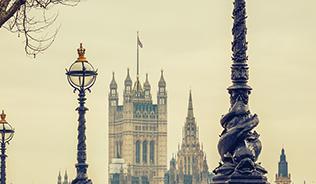This webinar provides an overview of a study examining the extent to which the City of London Corporation (CoLC) could influence levels of PM2.5 in the Square Mile.
This was undertaken to prepare for new statutory obligations for local authorities to manage emissions of PM2.5, and assist with meeting the new legislative standard required by the Environment Act 2021. The emissions inventory gives new and innovative information on the local sources which CoLC can target to improve PM2.5 in the City and beyond.
Outcomes of the Study
The study involved a literature review on other sources apportionment studies and typical sources of PM2.5, together with analysis of the morphology and composition of PM2.5 to better understand markers for certain sources. Further discussions with CoLC was undertaken to understand the unique sources of PM2.5 in CoLC which included road and river traffic, combined heat and power units (CHPs), medium combustion plant (MCP), cooking in restaurants, emergency generators and generators from filming events, construction sites, street works and Non-Road Mobile Machinery (NRMM). Activity data for these sources was developed from information provided by CoLC and emission factors were researched for these sources. This information was used to estimate the emissions from each of these sources. For railway and flight path sources, other established emissions inventory data from the National Atmospheric Emissions Inventory (NAEI) or London Atmospheric Emissions Inventory (LAEI) were used.
The emissions inventory revealed that the highest PM2.5 emissions from the Square Mile are due to restaurants (37%), followed by combustion plant (20%), NRMM (16%), road traffic (13%), and river traffic (10%) with minimal contributions from construction sites and street works. Road traffic was the fourth highest contributor, and this is likely to decrease further with the expansion of the London Ultra Low Emission Zone.





